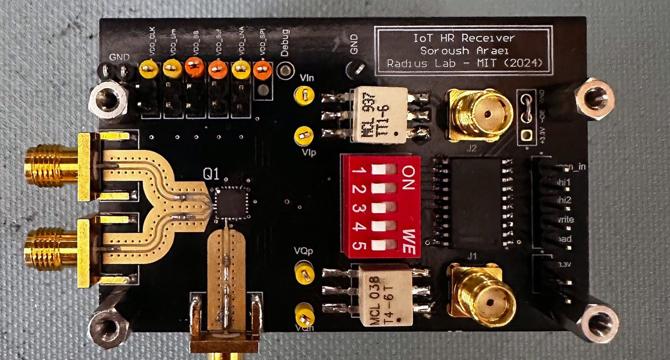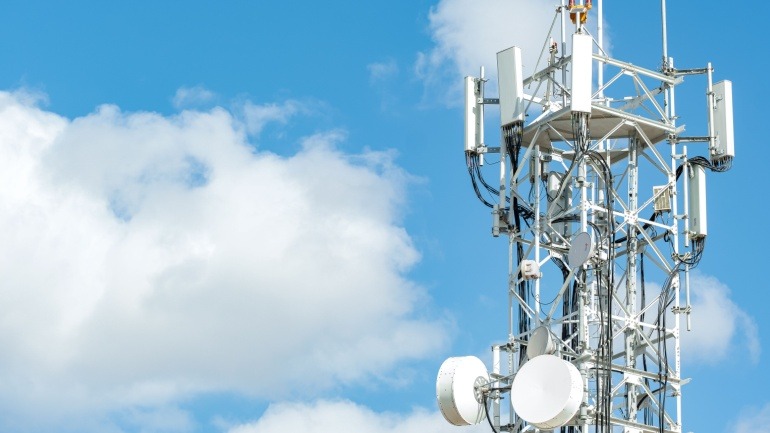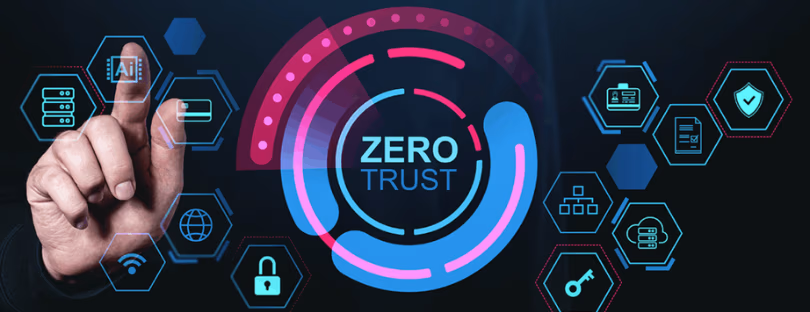IOT News
TechBullion
347

Image Credit: TechBullion
Prashanth Cecil: Pioneering Technological Frontiers in Supply Chain Management
- The global supply chain faces challenges like pandemic disruptions and rising operational costs.
- Prashanth Cecil, a leader in supply chain management, leverages technology for operational excellence.
- His initiatives include implementing LiDAR, IoT, ML models, and targeted automation projects.
Read Full Article
20 Likes
Hackernoon
325

Image Credit: Hackernoon
The Day I Struggled to Breathe – and How Technology Is Responding
- The author describes a day where high pollution levels affected their breathing and raised awareness of environmental impact.
- They delve into transformative technologies addressing carbon emissions, such as AI-driven carbon accounting and blockchain for carbon credits.
- Digital twins are highlighted for simulating sustainability outcomes before implementation, and IoT-enabled smart grids are mentioned for optimizing energy efficiency.
- The article emphasizes the role of these technologies in empowering individuals and organizations to make informed, impactful choices for a greener future.
Read Full Article
19 Likes
IEEE Spectrum
326

Image Credit: IEEE Spectrum
The Internet of Things Gets a 5G Update
- A new chip component expands IoT into 5G, promising low latency, energy efficiency.
- 5G tech allows connectivity to smaller devices like health monitors and smart cameras.
- IoT-over-5G uses frequency hopping and massive connectivity, enhancing network potential.
Read Full Article
19 Likes
Dev
483

Image Credit: Dev
New Meta lab is dedicated to advancing audio technologies for future AR and AI glasses
- Meta has launched a new $16 million audio lab in Cambridge, within the UK's Ox-Cam corridor.
- The lab is equipped with advanced technology like anechoic chambers, a configurable reverberation room, and motion-tracking space.
- The focus of the lab is to develop smarter audio for future AR and AI glasses, filtering out unwanted noise.
- This investment strengthens Meta's engineering presence in the UK and supports the country's goal to lead in AI and immersive computing.
Read Full Article
19 Likes
Discover more
Dev
312

Image Credit: Dev
Set up AWS IoT Secure Tunneling in Seconds with Tunnelmole
- AWS IoT enables remote device management but faces access challenges behind firewalls.
- Secure tunneling creates bidirectional communication for IoT remote access, facilitating troubleshooting and more.
- Tunnelmole simplifies secure tunnel setup for AWS IoT, providing instant remote device access.
- Easily set up a secure tunnel in seconds with Tunnelmole for efficient IoT management.
Read Full Article
18 Likes
Alvinashcraft
21

Dew Drop – July 14, 2025 (#4458)
- Top tech news highlights from various domains including AI, development, design, and more.
- Topics cover validation in Windows apps, Commodore's return, React libraries, and WinUI updates.
- Insights on Azure Functions, GitHub actions, agile methodology, AI tools, podcasts, and community events.
Read Full Article
1 Like
Dev
3

Image Credit: Dev
Why Rockchip RK3566 Android SBC Is Gaining Attention in Industrial IoT
- The Rockchip RK3566 Android SBC by Rocktech is gaining attention in the industrial IoT sector due to its blend of mainstream Android support and industrial-level hardware design.
- The SBC features a quad-core Cortex-A55 processor, supports Android 11 OS, and offers multiple display interfaces and GPIO options, catering to commercial and custom Android projects.
- Key features such as embedded form factor, support for dual-screen displays, availability of OEM-ready BSPs, and power management for long uptime make it attractive for industrial developers designing smart panels, control hubs, and touchscreens.
- The RK3566 SBC stands out from typical maker boards like Raspberry Pi with its Android/Linux OS support, multiple display interfaces, industrial design, and enhanced OEM customization options, making it better suited for industrial applications.
Read Full Article
Like
Dev
51

Image Credit: Dev
Remotely Access an IoT Device Instantly with Tunnelmole
- Learn how Tunnelmole simplifies remote access to IoT devices instantly and securely.
- Discover why remote access to IoT devices is crucial for monitoring, control, and development.
- Follow a practical example using a Raspberry Pi and Tunnelmole to create a sensor dashboard.
- See the benefits of using Tunnelmole, including simplicity, security, and self-hosting capabilities.
Read Full Article
3 Likes
Dev
316

Image Credit: Dev
AWS IOT: How to get a public URL instantly using the open source Tunnelmole
- Connecting IoT devices to the public internet can be challenging.
- AWS IoT users can easily get a public URL using Tunnelmole, simplifying access.
- Tunnelmole creates secure tunnels for quick, stable HTTPS URLs, aiding remote access.
- Follow the guide to set up Tunnelmole for your IoT devices and projects.
Read Full Article
18 Likes
Dev
67

Image Credit: Dev
How to Give Your IIoT Device a Public URL with Tunnelmole
- Connecting IIoT devices to the internet is crucial for unlocking their value.
- Tunnelmole simplifies this by providing a secure, public URL for IIoT devices.
- With Tunnelmole, access device web interface, receive webhooks, and integrate with cloud services.
- Guide covers IIoT importance, challenges, benefits of public URLs, and Tunnelmole setup steps.
Read Full Article
4 Likes
Medium
223
Image Credit: Medium
Is Your Data Safe? The Shocking Truth About IoT and Privacy!
- IoT devices collect personal and sensitive data in addition to technical information.
- Data collected by IoT devices flows through various channels, potentially compromising privacy.
- Privacy laws like GDPR and LGPD provide rights concerning personal data protection, including data collected by IoT devices.
- Users are advised to use IoT devices wisely and be aware of the data collected, its usage, and ways to protect it to maintain privacy.
Read Full Article
13 Likes
VoIP
36

Image Credit: VoIP
Trimble and KT Corp Partner to Boost South Korea Telecom Services
- Trimble and KT Corporation have partnered to enhance telecom and precise positioning services in South Korea using the Trimble RTX Fast network.
- The collaboration targets automotive OEMs and IoT companies, providing centimeter-level accuracy to boost safety, performance, and automation.
- Trimble plans to extend RTX Fast globally to facilitate a more connected future according to Olivier Casabianca, vice president of advanced positioning at Trimble.
- The joint efforts aim to offer ASIL-certified solutions for vehicle applications like ADAS and V2X, contributing to connectivity across various domains such as smart cities and field robotics.
Read Full Article
2 Likes
Dev
2.8k

Image Credit: Dev
What I Learned About POS Systems During a Casual Mall Visit
- During a visit to Emporium Mall Lahore, the author gained insights into POS (Point of Sale) systems, recognizing their importance in modern retail businesses.
- POS systems are not just for billing but also aid in calculating bills, tracking transactions, recording sales data for inventory management, and providing real-time updates to the central server.
- Key learnings from interacting with POS operators revealed features like automated inventory updates, business-driven data tracking, and enhancements in customer and staff experiences through streamlined operations.
- The experience underscored the value of proactive learning and respectful curiosity in gaining deeper insights into real-world systems and integrating technology into everyday business practices.
Read Full Article
24 Likes
Alertify
332

Image Credit: Alertify
Zscaler Introduces Zero Trust SIM for Global IoT Connectivity and Security
- Zscaler has introduced Zscaler Cellular, an AI-powered Zero Trust Exchange platform for IoT connectivity and security.
- Zscaler Cellular allows Zero Trust communication for IoT/OT devices using only a cellular SIM card, eliminating the need for additional software or VPN connections.
- The solution is available globally in August 2025 and is already being used by organizations like Sandvik and Maverick Transportation.
- The launch of Zscaler Cellular represents a significant advancement in IoT and mobile security, bringing cloud-scale security to every connected device through a SIM-based Zero Trust model.
Read Full Article
19 Likes
Dev
61

Image Credit: Dev
New project deployed on AWS! Wi-Fi Connectivity Notification!
- A new project was deployed on AWS aiming to address Wi-Fi connectivity issues at a beach house by providing notifications about internet status.
- The project involves repurposing an old Galaxy A5 device to send periodic requests to a Node.js backend deployed on an AWS EC2 instance, which monitors internet connectivity through a heartbeat endpoint.
- AWS SES is utilized to send email alerts when the internet connection is lost or restored, offering peace of mind to the users.
- Challenges and learnings included region-specific email verification for AWS SES, spam issues with Gmail addresses as senders, and strategies to minimize costs using AWS Free Tier services.
Read Full Article
3 Likes
For uninterrupted reading, download the app